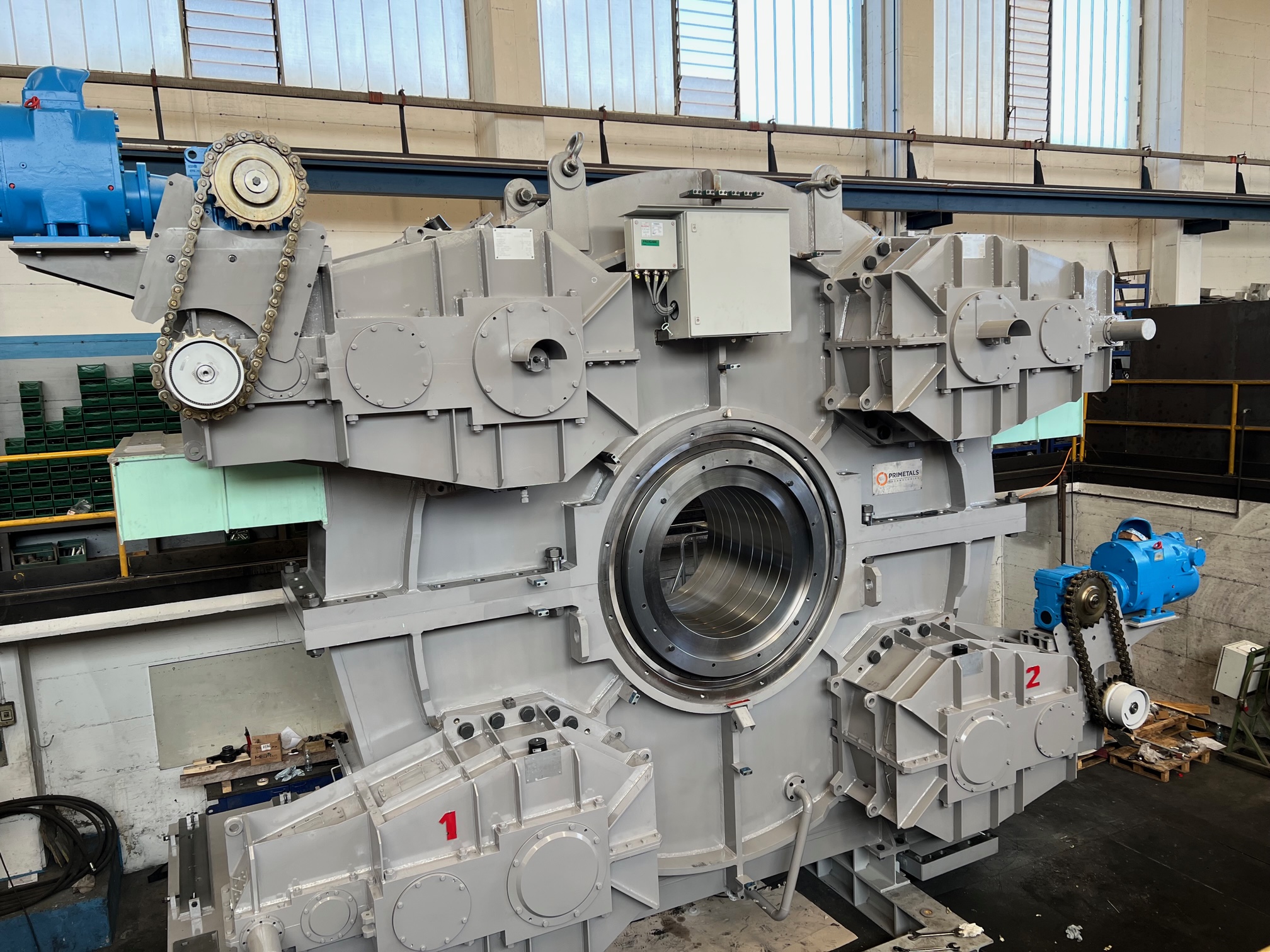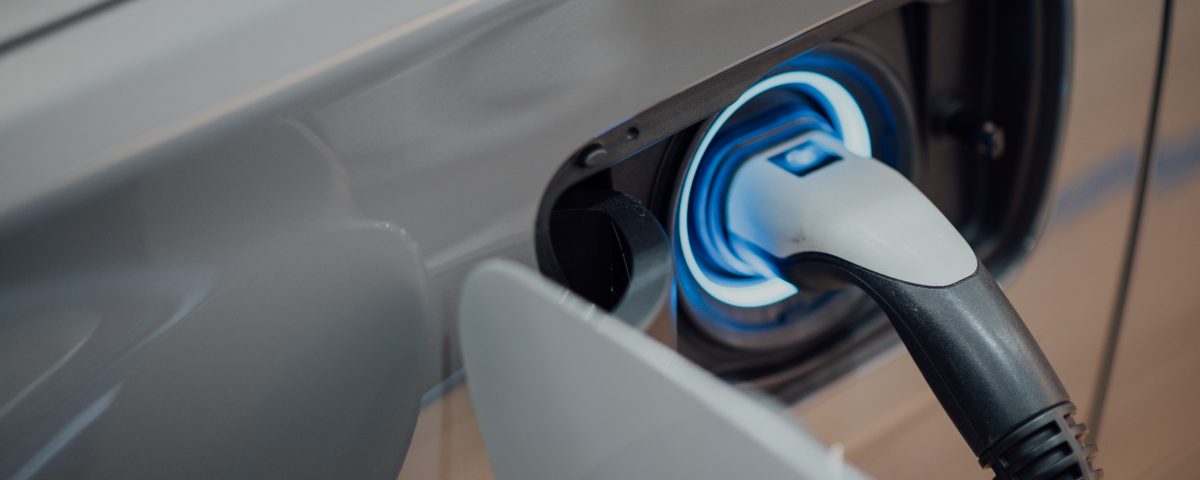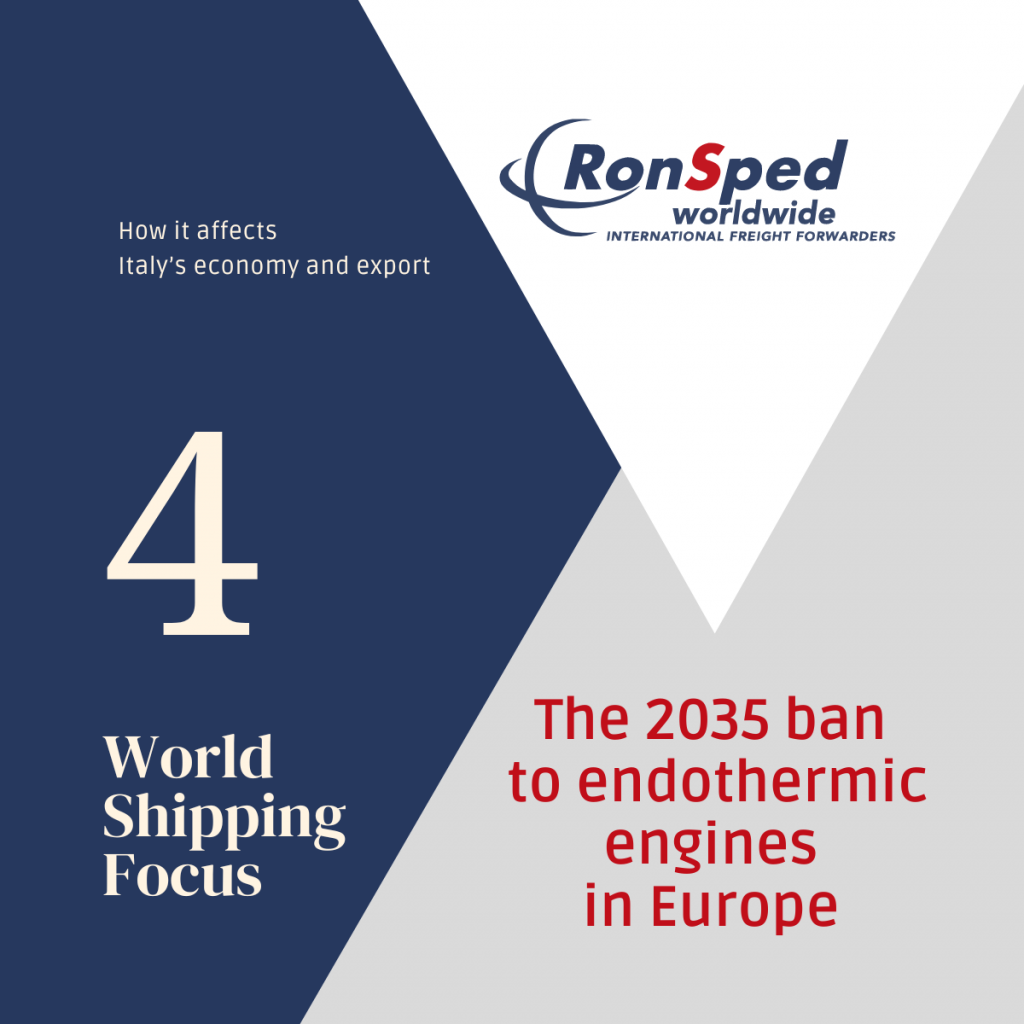
Out of gauge
16 Marzo 2023
Assemblea generale Spediporto 2023 “Genova@connected.world”
27 Aprile 2023The 2035 ban to endothermic engines in Europe and how it affects Italy’s economy and export

It’s no secret that Italy has been making strides in the export sector. In 2022 Italy’s exporting industry was focused on high-value sectors such as Technical machinery and computers, Vehicles, Pharmaceutical, Electrical machinery and equipment and was worth €625 billion (+100 compared to 2021). The ban on endothermic engines is posing a significant challenge for the Italian automotive industry and could affect the export.
The struggle of Italy
The shift towards electric engines is a necessary step towards a sustainable future, but it’s not without its challenges. Italian industries are struggling to make the conversion from endothermic to electric engines and prepare the necessary infrastructure, such as recharge columns. In Italy the high cost of battery-powered cars (on average il 30% more than the same diesel and petrol models) adds to the almost total lack of a network of recharging stations on the road network. The data gap between the rich North and South of Europe emerges clearly from the green market shares in the various EU countries. Electric cars catch up only 9% in more than half of the states center – oriental and southerners of the Union where the average net income is 13,000 euros. Conversely, the higher odds (30% and above) are found in the five Northern and Western European countries where the income exceeds 32 thousand euros. The lack of incentives from the government to the population can be a great problem too. The funds for 2023 already ended and a lot of person can find themselves not able to afford a new electric vehicle turning the overall fleet of Italian cars older and older.
The limitation to vehicles export
Lack of internal demand and lack of infrastructures limitate the growth of the Italian sector but there are other challenges for the export, such as the new power of Italian currency. Over the past year, the Euro has become stronger than the currencies of several Italian trade partners. Some of these currencies include the U.S. Dollar, the Canadian Dollar, the Chinese Yuan, and the Great British Pound. Since Italian products are priced in Euros, this makes Italian products more expensive to buyers in those countries.
The value of electric engines and the role of Italian companies
While electric engines are a step towards a more sustainable future, it’s important to acknowledge that they are not without their limitations. For example, the production of electric vehicles can have a significant environmental cost, particularly when it comes to the extraction of rare earth metals and other materials needed for their batteries.
As we work towards a more sustainable future, it’s crucial that we consider the full lifecycle of our products and the impact they have on the environment. This includes not only the use of the product but also its production and disposal.
By investing in research and development, automotive companies can help to find new, more sustainable materials and production methods that will help to minimize the environmental impact of electric vehicles.
These companies companies have a rich history of innovation and design, and they have the potential to lead the way in the transition to electric engines. Companies like Fiat, Lamborghini, and Ferrari have already made strides in this direction, but there is still a long way to go.

The trucks evolution to electric
On another side, the truck sector is more optimistic and is looking to 2035 to have all electric trucks for the transport of goods (ZET – Zero Emission Trucks) [1] – including those intended for long distances – cheaper than their diesel engine counterparts, while guaranteeing the same operating range and equal load capacity or greater. These are the main conclusions of a study carried out by the experts of the Dutch research institute TNO and commissioned by Transport&Environment (T&E) in collaboration with Agora Verkehrswende. The survey, argues T&E, offers an effective answer to the doubts relating to the ability of electric vehicles on the road to meet the challenges of logistics by offering, with often better performance, an economic and operational advantage compared to diesel-powered rivals.
The ships evolution to electric
The global electric ship market was valued at USD 4.9 billion in 2021 and is projected to reach USD 12.78 billion by 2030 at a CAGR of 11.24% from 2022 to 2030. The adoption of Hybrid and Electric Propulsion Is Driving the Market.
The driving factors of the electric boat and ship market include factors like increased maritime tourism and increased seaborne trade, as most of the world’s goods are carried by ships. As the global economy is dependent on the shipping market, the electric boat market is expected to play a bigger role in this sector as environmental causes have increasingly come to the forefront in this sector. Electric and hybrid types of ships cause less emission and save the environment from getting polluted more. Diesel-operated shipment ships are one of the fundamental contributors to worldwide carbon emissions.
By now electric batteries are mainly used to used to cover short distances, or for docking operations where the ports are organized with electric columns. Limited travel distance and ability are the main restraints of full-electric powered ships. These ships, on average, can tour eighty km at a single rate. The biggest absolutely electric-powered passenger vessel, the Ellen ferry running in Denmark, can go through a spherical experience of twenty-two nautical miles. A massive challenge concerning electric-powered ships is the variety they could tour earlier than the batteries require recharging. Hybrid ships can alleviate this constraint to a volume with the aid of using putting in diesel mills that may rate the batteries and propel the delivery in instances of greater strength requirement or while the batteries are depleted. However, this doesn’t remedy the trouble of getting a “zero-emission” transport and shipping enterprise concept.
For sure the transition will require a lot of research and development but is one of the five main themes for sustainability. We must continue to innovate and find new solutions to these challenges. This is where the expertise of Italian automotive and shipping companies can play a crucial role. Ultimately, the transition to electric engines is just one step towards a more sustainable future. We must continue to work together to find new solutions and push the boundaries of what is possible.
Read the other World Shipping Focus News:
Post 2M. Perspectives in container shipping
India as a global hob for logistics and manufacturing
Sources:


